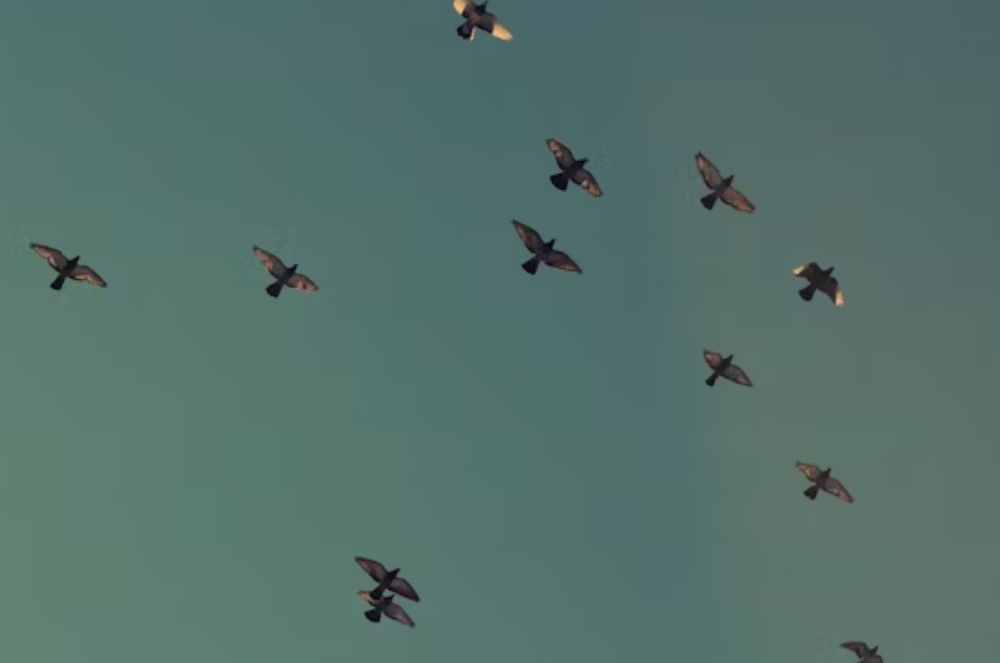Speciering is a fascinating concept with broad implications across various scientific fields. From biology to chemistry, and even marketing, the concept of speciering can help us understand the formation of new entities—whether they are species, chemical forms, or market segments. In biology, speciering refers to the evolutionary process of speciation—the formation of new and distinct species. This process is vital to understanding biodiversity and how life evolves over time. However, speciering isn’t confined solely to biology. In chemistry, speciering relates to the identification of various chemical forms of an element. In marketing, speciering can be a strategic method of targeting diverse customer segments.
In this article, we will explore the concept of speciering in-depth, focusing on its biological roots, its applications in different fields, and its broader impact on science, technology, and business.
What is Speciering?
Speciering refers to the process by which new species or forms emerge through evolutionary or environmental changes. In its biological context, speciering occurs when a population of organisms becomes genetically distinct from its ancestors due to various mechanisms such as natural selection, genetic drift, and reproductive isolation. Over time, this genetic divergence can result in the creation of a new species that cannot interbreed with its original population.
However, speciering is not confined to biology. In other disciplines like chemistry, it takes on a different meaning, focusing on the identification of distinct chemical forms of an element, while in marketing, speciering refers to the strategic segmentation of a target market or product offerings.
Defining Species – Biological and Conceptual Foundations
Understanding speciering begins with grasping the concept of a species. In biology, a species is typically defined as a group of organisms that can interbreed and produce fertile offspring. The Biological Species Concept (BSC) explains that species are reproductively isolated from one another, meaning they do not exchange genetic material under natural conditions. However, this concept is challenged by cases like hybrids and asexual organisms, highlighting the complexity of defining a species.
There are other models used to define species, such as:
- The Morphological Species Concept: This method classifies species based on physical traits.
- The Phylogenetic Species Concept: Focuses on shared evolutionary history and genetic differences.
- The Ecological Species Concept: Defines species by their ecological roles.
These concepts lay the foundation for understanding how new species arise, driven by various evolutionary mechanisms.
The Process of Speciering in Evolution
In the biological context, speciering is a gradual process. It begins when a population of organisms experiences genetic mutations that introduce new traits. These mutations may be beneficial, neutral, or harmful, but they provide the raw material for evolution. Natural selection then acts on these variations, favoring those that enhance survival and reproduction.
Over time, genetic divergence occurs, particularly when populations become geographically or behaviorally isolated. With reduced gene flow between isolated groups, they begin evolving independently, leading to genetic distinctions that can eventually result in the formation of a new species.
Key Factors Driving Speciering in Evolution:
- Genetic Mutations: These provide the raw material for evolutionary changes.
- Natural Selection: It acts on advantageous traits, leading to gradual adaptations.
- Genetic Drift: Random fluctuations in allele frequencies, especially in small populations.
- Reproductive Isolation: A critical factor for completing speciering when two populations can no longer interbreed.
Genetic Mechanisms Behind Speciering
Speciering is deeply rooted in genetics, where genetic variations play a significant role in the creation of new species. Mutations in DNA sequences introduce new traits into the gene pool of a population. These genetic changes can lead to altered traits, such as different behaviors, physical features, or adaptations to the environment.
Genetic Mechanisms:
- Point Mutations: A change in a single base pair of DNA, which can have dramatic effects on protein function.
- Chromosomal Changes: Larger-scale mutations like insertions, deletions, and duplications.
- Epigenetics: Changes in gene expression influenced by environmental factors without altering the DNA sequence.
Genetic drift also plays a role, particularly in small populations, where random events can drastically alter the genetic composition of the population. Over generations, these genetic shifts can cause populations to become so distinct that they no longer belong to the same species.
Natural Selection and Environmental Adaptation
Natural selection is the process by which traits that improve an organism’s ability to survive and reproduce become more common in a population. This process drives environmental adaptation, which often leads to speciation. As environmental conditions change, populations evolve traits that enhance their survival. These traits can include changes in behavior, morphology, or physiology.
Example: Darwin’s Finches
A famous example of speciering driven by natural selection is Darwin’s finches on the Galápagos Islands. These finches evolved different beak shapes based on available food sources. The different beak shapes allowed the finches to exploit different ecological niches, leading to the formation of new species over time.
Genetic Drift and the Founder Effect
While natural selection is the primary driver of speciation, genetic drift can also lead to divergence, particularly in small populations. In such populations, random events can alter allele frequencies and push them in certain directions.
The Founder Effect
The founder effect occurs when a small group of individuals establishes a new population, often in isolation. This limited genetic pool can lead to rapid speciation as genetic drift has a more significant impact. For example, isolated populations of island species often evolve quickly due to the founder effect.
Reproductive Isolation and the Completion of Speciering
Reproductive isolation is the final step in speciering. It occurs when two populations of organisms can no longer interbreed and produce fertile offspring. Reproductive isolation can be prezygotic (before fertilization) or postzygotic (after fertilization).
Examples of Reproductive Isolation:
- Prezygotic Isolation: Differences in mating rituals, temporal isolation (different mating seasons), or mechanical isolation (incompatible reproductive organs).
- Postzygotic Isolation: Hybrid sterility, such as in mules, which are sterile hybrids between horses and donkeys.
Once reproductive isolation is achieved, speciation is complete, and the populations have become distinct species.
Types of Speciering – Paths to New Species
Speciering can follow several different paths, depending on the level of isolation and the mechanisms driving genetic divergence.
- Allopatric Speciering: Occurs when populations are geographically separated, such as by a mountain or river, leading to genetic divergence.
- Sympatric Speciering: Happens within the same geographical area, often due to ecological differences or behavioral changes.
- Parapatric Speciering: Occurs in adjacent populations that experience some level of gene flow but are still reproductively isolated.
- Peripatric Speciering: Involves a small group from a larger population becoming isolated, leading to rapid genetic divergence.
- Hybrid Speciering: Arises when two different species interbreed and produce a new species, such as some sunflowers.
Case Studies in Nature
Speciering is not just theoretical; it is a process observable in nature. Real-world examples help illustrate the various mechanisms behind speciation:
- Darwin’s Finches: Different species of finches on the Galápagos Islands evolved distinct beak shapes based on the food available, illustrating adaptive radiation.
- African Cichlid Fishes: In the African Great Lakes, cichlid fishes have undergone rapid speciation due to ecological diversity.
- Apple Maggot Fly: Sympatric speciation in action, where the fly’s shift from hawthorn to apple trees led to genetic divergence.
Speciering in the Fossil Record
The fossil record provides important insights into speciering over time. Fossils help trace the gradual changes that occur as species diverge. Transitional fossils, such as Archaeopteryx, show intermediate forms that illustrate speciation events. However, gaps in the fossil record often make it difficult to track every step of the process.
Human Influence on Speciering
Humans play a significant role in influencing speciering. Urban environments create new ecological niches, leading to the adaptation and potential speciation of species in cities. Additionally, human activities such as selective breeding, habitat destruction, and the introduction of invasive species can speed up or alter the speciation process.
The Role of Speciering in Environmental Science
Speciering also plays a crucial role in environmental science. Understanding how species evolve and adapt to changing environments can help scientists predict and manage the impacts of climate change. Invasive species, for example, often lead to hybridization or outcompete native species, which can result in altered ecosystems.
Speciering in Chemistry – Chemical Speciation
In chemistry, speciering refers to the identification and quantification of different forms of a chemical element. This is critical in fields like environmental science and toxicology, where the chemical form of an element can drastically affect its toxicity. Understanding chemical speciation helps in pollution control, waste management, and drug development.
Speciering in Marketing and Communication
In marketing, speciering refers to the strategic segmentation of target audiences based on their behaviors, preferences, or demographics. This process helps brands tailor their products or services to specific customer segments. Companies like Spotify, Airbnb, and Amazon use speciering to create personalized experiences that resonate with different customer groups.
Challenges and Controversies in Studying Speciering
Despite its importance, the study of speciering faces several challenges. The definition of species remains complex, particularly with the rise of hybrid species, ring species, and cryptic species. Furthermore, the artificial classification of subspecies as full species can inflate biodiversity numbers, complicating conservation efforts.
Future Directions in Speciering Research
Future research in speciering is focused on understanding how species adapt to changing environmental conditions. Advances in genomic technologies, artificial intelligence, and machine learning are enabling scientists to predict how species will evolve in response to climate change. Additionally, conservation genomics is helping protect endangered species by understanding their evolutionary potential.
Conclusion
Speciering is a multi-disciplinary concept that spans biology, chemistry, and marketing. From the genetic mechanisms behind speciation to its applications in environmental science and business, speciering provides a window into how complexity and diversity arise in both natural and artificial systems. Understanding speciering is essential for anyone interested in evolutionary biology, environmental conservation, or even strategic business decisions.
FAQs
What is speciering in biology?
Speciering in biology is the process by which new species form when populations become genetically distinct and reproductively isolated over time.
What causes speciering to happen?
Speciering is driven by factors like genetic mutations, natural selection, isolation, and genetic drift, which lead to the divergence of populations into distinct species.
What are the types of speciering?
Types of speciering include allopatric, sympatric, parapatric, peripatric, and hybrid speciation, each occurring under different environmental or geographical conditions.
Why is speciering important?
Speciering is important because it explains biodiversity and helps scientists understand how species evolve, adapt, and interact within ecosystems.
Can humans influence speciering?
Yes, humans influence speciering through activities such as selective breeding, habitat destruction, and introducing invasive species, all of which can impact the rate and direction of speciation.
For More Updates Visit: Biomagazine









Leave a Reply